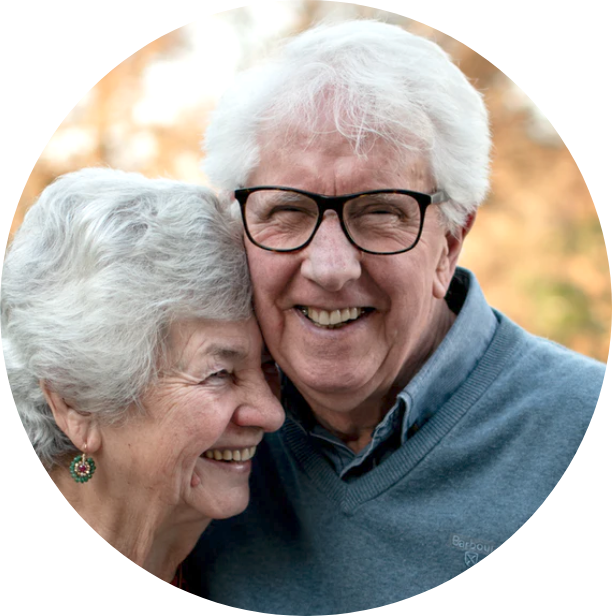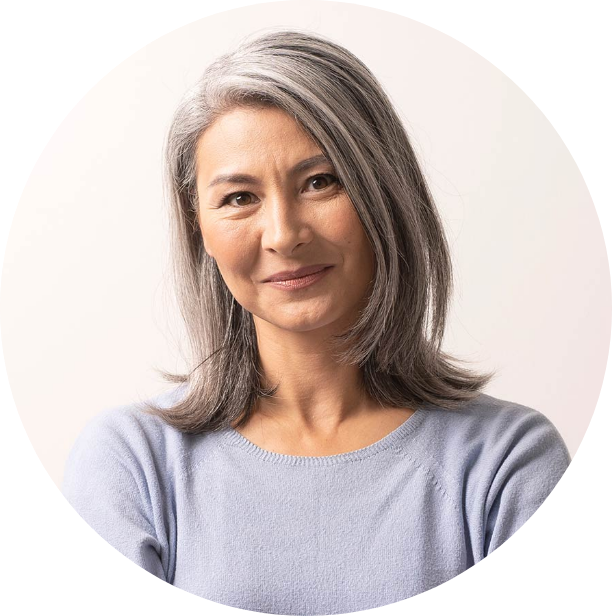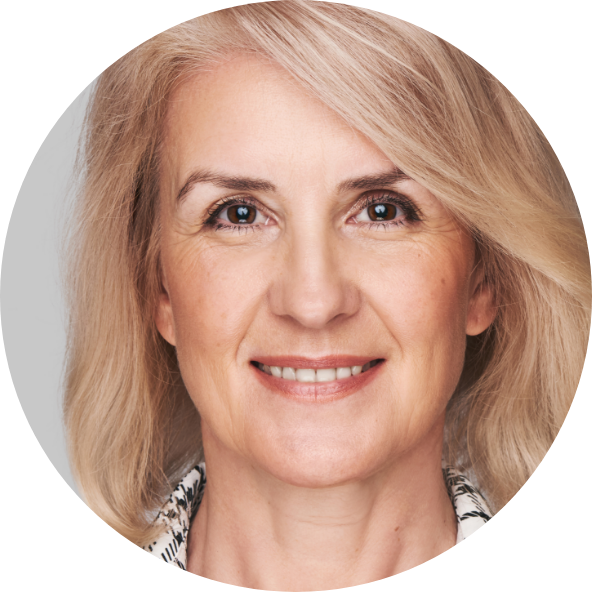Stem Cell Therapy
Conveniently located to serve the areas of Los Angeles, Woodland Hills, Agoura Hills, Northridge, Van Nuys, Sherman Oaks, Thousand Oaks, Tarzana, Encino, Chatsworth, Calabasas, Bell Canyon and Westlake Village.

Stem cell therapy is a non-surgical treatment to heal injured joints and tissues. While it is most popular among athletes, those seeking relief from arthritis and overuse injuries can also benefit greatly. Stem cells have the potential to turn into any cell type in the body, a process called differentiation, giving people hope for relief from the pains of both acute and chronic injuries.
Book your appointment for stem cell treatment at Comprehensive Rheumatology Center. Our team of experienced doctors and professionals serve the residents of Greater Los Angeles with combined holistic approaches that take into account every patient’s unique medical history and needs. Our practice is led by Dr. Nazanin Firooz and Dr. Phillip Aleksiejuk, board-certified rheumatologists who uphold a welcoming and family-like atmosphere, offering research-backed treatments that focus on the root causes of injury and illness, without the need for surgical intervention.
To learn more about the capabilities of stem cells and how they can transform your health and mobility, call our office at (818) 598-0000 or use our contact application to inquire about a consultation appointment.
Contents
How Do Stem Cells Work?
Stem cells differentiate into new cells often referred to as “daughter cells”. After producing these new cells, they once again turn into more specialized cells that build up many types of connective tissues. They can become mesenchymal stem cells (MSCs), the cells most capable of repairing:
- Tendons
- Ligaments
- Bone
- Cartilage
MSCs also facilitate angiogenesis, the formation of new blood vessels, further speeding up the healing process. Angiogenesis can also support new stem cell adaptation for a specific type of injury. (1) By triggering the healing processes, this type of therapy can aid in the reduction of pain and resolution of these conditions/injuries:
Tendon & Ligament Strains and Tears
Minor strains are characterized by micro tears that affect the functioning of the tendon and cause pain. Stem cells can reduce inflammation associated with this type of injury. A grade 3 strain is officially considered a tear, a more serious injury. Still, stem cells can help regenerate the issue of tears, helping the body recover faster. In overuse-related tendon strains, they can also ease the symptoms of tendonitis, a type of chronic inflammation. Research has found that stem cells for strains and tears are more effective than other types of regenerative medicine approaches, like platelet-rich plasma. It can also provide long-term strengthening that helps prevent cases of re-injury. (2)
Muscle Strains and Tears
Just like tendons, muscles can experience various degrees of strains and tears. Sprained muscles, pulled muscles, and other muscle injuries can affect various parts of the body, such as the hamstrings, calves, and quadriceps. These injuries often occur during physical activities that involve running, jumping, or sudden changes in direction. Sports-related muscle strains and tears are particularly common among athletes, but they can also impact individuals who engage in regular exercise or physically demanding work. Stem cell therapy can reduce inflammation, supporting angiogenesis, and making muscles more resilient.
Osteoarthritis and Cartilage Injuries
Osteoarthritis is the most common form of arthritis. It is characterized by a breakdown of cartilage between bones that normally works to provide cushioning and facilitate smooth movement. The most common symptoms include joint pain, swelling, stiffness, and a reduced range of motion. These symptoms tend to worsen over time and can significantly impact daily activities. Although it is a degenerative disorder that worsens with time, stem cells can reduce pain-causing inflammation and differentiate into cartilage tissue, helping to significantly slow the progression alongside other treatments. The same regenerative process applies to sports-related cartilage injuries.
Rheumatoid Arthritis (RA)
Rheumatoid arthritis is a more complex form of arthritis caused by an immune attack. It can cause pain, inflammation, and potential joint deformity. It occurs when the immune system mistakenly attacks the body’s own tissues, particularly the synovial membrane that lines the joints. This results in swollen joints, morning stiffness, and reduced range of motion. While there is no cure for this condition, many rheumatologists help patients manage their condition using several modalities, including stem cells.
Bursitis
Each joint has cushioning sacs called bursae that are filled with lubricating synovial fluid. When these sacs become inflamed, it can lead to pain, tenderness, swelling, and limited mobility. Bursitis can occur in various joints such as the shoulder, hip, knee, elbow, and ankle. This condition can be caused by repetitive motion or overuse injuries, such as those commonly seen in athletes or individuals engaged in physical labor. The constant stress placed on a specific joint can lead to the development of bursitis over time. Direct injection of stem cells into these structures can ease inflammation and encourage the cells to repair the long-term damage.
Benefits of Stem Cell Therapy
Finding the relief you need is essential to getting back to the activities you love. For many, the benefits of stem cell therapy have helped them take the first step toward a pain-free lifestyle:
- Stem cell therapy is non-surgical and can prevent the need for surgery later on, depending on the nature of the injury or tissue degeneration. (3)
- We administer stem cells with ultrasound guidance, ensuring that injections are directed at the exact locations of injury.
- Only local anesthesia is needed
- You can recover from this minor procedure with minimal downtime, much less than what would be required for surgery.
- Stem cells are isolated ethically from sample tissues of human donors, making injections entirely biocompatible and all-natural.
Personal Consultation
Booking a consultation is the first step toward discovering the long-lasting benefits and transformative results of stem cell therapy. During your first appointment at Comprehensive Rheumatology Center, we will first assess your history with your condition and ask you about the treatments you have tried so far. We may order imaging tests to gain a better perspective of the injury and inquire about your goals and expectations for stem cell injections. We will answer any questions you may have about the treatment, including how many sessions you may need and other therapies you should try to improve your rate of recovery.
To find out if you are an eligible candidate for stem cells, call our office in Los Angeles at (818) 598-0000 or fill out our application online, and a member of our staff will get back to you with more details.
Preparation
To prepare for treatment with stem cells, we will thoroughly review your prescriptions and any supplements you take regularly. We may advise you to stop taking certain medications, especially blood thinners and other anti-inflammatory medications. These can contain properties that can reduce the effectiveness of stem cells and interfere with the natural regenerative processes. In addition to imaging tests to review the state of the injury/condition, they may test your range of motion and rate your pain on a scale. From there,nwe will formulate a personalized treatment plan that coincides with your level of commitment to the therapy and your individualized needs.
Treatment Steps
Our rheumatologists utilize stem cells that have been properly stored, evaluated, and purified. They undergo an isolation process called centrifugation, in which a device called a centrifuge isolates stem cells that can differentiate into the building blocks of various tissues. (4) After administering local anesthesia to provide complete numbing of the tissues, we will then use a handheld ultrasound device to see the various layers of subcutaneous tissues. This visualization will allow usto carefully administer the injections in the correct area. The procedure itself only takes a few minutes, and patients can expect to get back to their daily routine with minimal post-procedure discomfort.
When Does Stem Cell Therapy Begin Working?
After you receive your injections, you will likely experience some minor soreness and discomfort in the area for up to 1 week. Your doctor will review with you which over-the-counter medications are safe to take during your treatment. Certain medications like aspirin and ibuprofen can interfere with the effectiveness of the stem cells, so it is important to follow directions regarding aftercare.
Since tissue regeneration and inflammation reduction can take some time, you may not begin to notice improvements for a few weeks. The resulting relief you experience with stem cell injections will depend on:
- The condition being treated. If you have more severe damage in the treatment area, you will require more time and treatment sessions to facilitate adequate healing.
- Your overall health. Your unique metabolism and state of health will greatly contribute to the quality of your results. Your health will affect the quality and functioning of your cells which help create an environment for stem cells to flourish.
- Aftercare. You should refrain from strenuous activities and follow other instructions related to your injury. For some, this may include physical therapy or applying heat and/or cold to the area. Speak with your provider about what else you can do to treat your condition and evade the need for surgery if it applies to you.
As you continue with your treatment plan, you will not only notice a significant reduction in your pain levels, but you will see improvements in your range of motion, and you will require less medication to manage your condition.
Cost of Stem Cell Therapy in Los Angeles
As strong believers in the research-backed effectiveness of holistic treatments and stem cells, we will take into consideration the number of injections you may require, your recommended treatment plan, and the type of stem cells you will most benefit from to calculate the cost of your treatment.
If you are interested in gaining more education on stem cell therapy, we encourage you to schedule a consultation at our Greater Los Angeles office. Call (818) 598-0000, or visit our contact page, and we will help you find a date and time that works with your schedule. To explore topics related to rheumatology and other conditions we treat at our practice, visit our blog, the NewsRheum.
References
- Vasanthan J, Gurusamy N, Rajasingh S, et al. Role of Human Mesenchymal Stem Cells in Regenerative Therapy. Cells. 2020;10(1):54. doi:https://doi.org/10.3390/cells10010054
- van den Boom NAC, Winters M, Haisma HJ, Moen MH. Efficacy of Stem Cell Therapy for Tendon Disorders: A Systematic Review. Orthopaedic Journal of Sports Medicine. 2020;8(4):2325967120915857. doi:https://doi.org/10.1177/2325967120915857
- Eun SC. Stem Cell and Research in Plastic Surgery. Journal of Korean Medical Science. 2014;29(Suppl 3):S167. doi:https://doi.org/10.3346/jkms.2014.29.s3.s167
- Pelekanos RA, Sardesai VS, Futrega K, Lott WB, Kuhn M, Doran MR. Isolation and Expansion of Mesenchymal Stem/Stromal Cells Derived from Human Placenta Tissue. Journal of Visualized Experiments. 2016;(112). doi:https://doi.org/10.3791/54204






